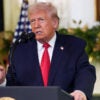North Korean leader Kim Jong-Il’s visit to China this week has again raised questions about the nature of their relationship.
A recently leaked U.N. report described suspected ballistic missile technology exchanges between North Korea and Iran. The technology transited through an unnamed neighboring country, which several U.N. diplomats, under the condition of anonymity, have identified as China.
Not surprisingly, China is apparently blocking the public release of that report.
As Heritage experts James Carafano and Owen Graham explain, North Korea and Iran have a long history of military cooperation, and Iran’s missile arsenal, which is the largest in the Middle East, draws heavily on North Korean technology and designs. North Korea remains intent on gaining nuclear weapons; it may have already achieved its goal.
Yet the most disconcerting aspect of the leaked report may be that China, which has the most influence with North Korea of any member on the U.N. Security Council, may not just be turning a blind eye toward this illicit cooperation but may in fact be allowing it.
Advances in Iran’s ballistic missile technology are worrisome as well, even after four rounds of U.N. sanctions. This week the press got hold of an IAEA report revealing that Iran has increased its supply of low enriched uranium, a precursor to weaponized uranium.
The U.S. government raised the pressure on Iran and North Korea this week by announcing new sanctions targeting U.S. companies and individuals suspected of doing business with North Korean, Syrian, or Iranian nuclear or missile research programs. The sanctions are a positive step, but their effectiveness remains an open question.
As Carafano and Graham point out, U.N. and U.S. sanctions haven’t yet halted the efforts of Iran and North Korea. And one reason may well be the cover they are getting from an as-yet “unnamed” country.































One Reply to “A Nuclear Triangle?”